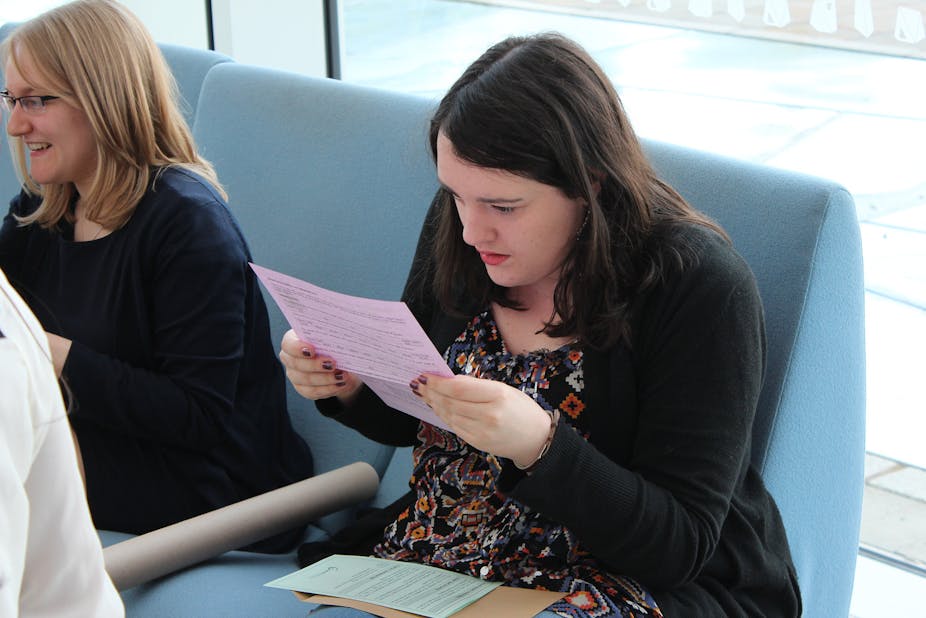The last-minute hunt for places on university courses that we call “clearing” begins today. The name takes on a particular irony this year for both school leavers and universities, because the situation is anything but clear. This year, students will be caught in the cross-hairs as universities of all shapes and sizes battle to win their attention.
When A Level results are handed out, the annual rush for remaining university places will begin in earnest. The way university admissions work is for A Level students to apply to their preferred universities through UCAS before being made offers that are conditional on their results. They choose the offer they want most and retain a back up or “insurance” offer.
If they secure the required grades today, their place will be confirmed by the university of their choice. But those students who do not achieve the expected grades, or who gain better grades than predicted, can enter into “clearing”, a process through which universities offer places for those courses that still have vacancies. This annual ritual starts on the day the A Level results are announced and tends to last into the next two weeks of August.
In the past it was considered a sign of institutional weakness for a university to recruit students through clearing. It was thought that only less successful students would require this facility. They have not achieved their predicted grades, after all, and the clue is in the name: these are courses that universities could not fill up-front.
But the world is rapidly changing and clearing is no longer the back-door route into university it was once considered. The coalition government’s higher education reforms and the burgeoning climate of the student-as-consumer is transforming clearing from a summer chore for academic staff into a de facto post-application admission service.
New rules
Following the tripling of tuition fees, it became clear that, despite expectations, there would be no real market in student fees. Given the option of charging anything from £6,000 to £9,000 per year, most institutions opted for the full £9,000. Because each was only allowed to offer a certain number of places to students, there was little need to act competitively.
Now, things are changing. Universities are on the hunt for students like never before and this is because the hand brake has been taken off some student numbers. The government wanted to create a market in higher education so it has decided to allow universities to offer places to as many students with ABB grades or above as they like. These highly qualified school leavers boost a university’s league table position, which in turn makes the university more attractive to other well-qualified applicants: its a virtuous and, at £9,000 a time, well-renumerated circle.
Last summer, when the tariff for open recruitment was set at AAB, several notable universities were caught out by these new rules and significant numbers of places on distinguished courses went unfilled. Only a finite number of AAB applicants can exist in the system at any one time. When one university recruits more students, another can only recruit fewer. Last year, an atmosphere of political pressure to curb perceived A Level grade inflation compounded the scramble for students. It meant that, for the first time in two decades, the number of students achieving passes at A grade actually fell. Across the country, universities that had set their entry tariffs in the region of AAB found themselves with far more empty places than they had anticipated.
This year, universities are more prepared and there will undoubtedly be more places available through clearing for well qualified students than ever before, as “the market” makes post-qualification application the norm.
There have been several attempts, including the Schwartz Report of 2004, to encourage universities to move towards a system in which students only apply for degree courses once they have their A Level results. The government’s own figures show that only 51.7% of predicted A Level grades are accurate and that 41.7% are over-predicted. The official line from the sector is that so-called “post-qualification application” would be rushed and unpredictable, and now if some universities can take in as many ABB students as they like in August, then there is little incentive for them to change the present system.
New players
As if it wasn’t hard enough to choose between universities already, the market place this August will be further crowded by new entrants: so-called “private providers”, some of whom have just this summer attained university status. Courses at these institutions are usually cheaper than traditional universities and represent a seductive offer for anyone looking to minimise their graduation debt.
New horizons
Evidence suggests the canny student consumer in England is also looking increasingly to European and North American universities, where the cost of a degree is either substantially less or can be covered by full scholarships for the well qualified. Others will decide that the working-life-long debt that comes with a £9,000-a-year degree is not worth the stress and will be put off attending university entirely.
New burdens
The choices this present generation of school leavers faces with respect to higher education and employment are harder than ever to make and represent a considerable burden for young shoulders. Those who make the best decisions will be those who have the best advice and that’s why our university admissions process is said to continue to favour the middle class.
What is a kid to do? Many will have lain awake last night worrying about their exam results, today they’ve got even more to ponder.

